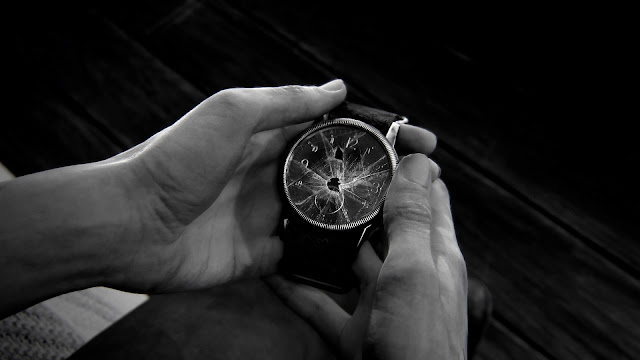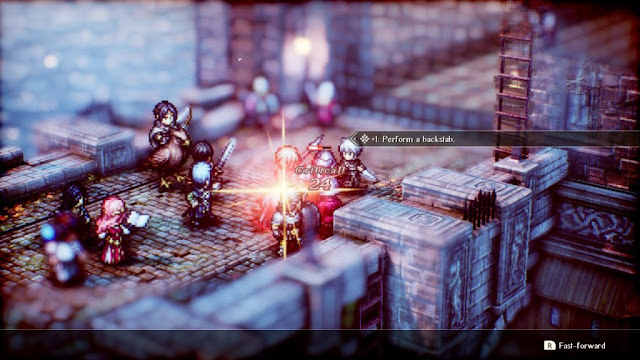Thoughts, musings, ideas and occasionally short rants on the past, present and future of electronics entertainment
Saturday, February 27, 2021
Tuesday, February 23, 2021
SRPGs
Final Fantasy: Tactics was not my first strategy RPG (Shining Force was), nor is it my favorite (that honor belongs to Vandal Hearts). Even so, I feel compelled to mention some of the merits found in this genre-defining game. It also stands as unsurpassed despite being well over two decades old. So, where to begin...
Probably the single most noteworthy feature in Final Fantasy: Tactics is its job system. In essence, player-controlled characters in the game can change classes, but retain skills and abilities acquired during their previous occupations. Additionally, it's possible to "learn" abilities and skills used by enemies in combat. While not unique to the Final Fantasy franchise, this does mark a significant departure from other strategy RPGs in that each unit has a player-determined career path that defines who they are. Typically, characters in these kinds of games have a very linear upgrade track with (at best) a binary choice somewhere along the way. In order to avoid the problem of every character feeling like a bland mishmash of options though, important story characters begin as exclusive classes. On top of this there are certain more powerful classes that are only available to characters who meet particular sets of experience prerequisites. It's an interesting compromise between flexibility and customization while still making characters distinct.
Gameplay comes in the form of tactical turn-based skirmishes of up to a dozen or so units that take place on diorama-like battlefields. The small size of these arenas actually work to the game's advantage in that they throw the player directly into the action. The single color backgrounds also do a surprisingly good job of conveying moods given their simplicity. For example a blue background might help create the image of a clear sunny day, while grey implies overcast weather and black feels like encroaching darkness. These same sort of dioramas are used in cutscenes and story segments which gives the game a stage theater quality to its presentation. Reinforcing this is plot and dialogue which have a pseudo-Shakespearian vibe.
I should also mention there are two versions of this game. The original PS1 release and a remaster for the PSP (eventually ported to mobile devices). The updated adaptation is referred to as the War of the Lions version and boasts a variety of improvements including a better (than the original) localization featuring bouts of Ye Olde English. Without spoiling anything, the plot also has a tragic feel to it. So, in other words, it reads like a Shakespeare play at times. Generally speaking, the game is a low fantasy setting that grows increasingly outlandish as events unfold.
One other thing I want to mention is the numerous subsystems found in Final Fantasy: Tactics that can be completely skipped over by the player. There is a whole game mechanic involving birthdates and zodiac signs that can be safely ignored. It's possible to capture and breed certain monsters to assist in battle. There are even several classes (such as the Astrologer, Mime, and Arithmetician) that I never used, nor fought against over the course of the game. The player can even send some of his units on text-driven errands involving treasure hunting or exploration. Overall, there's an incredible amount of depth to be found, but only at the player's discretion.
Of course, there are often criticized aspects to Final Fantasy: Tactics as well. Certain skills or class combinations can lead to some character builds feeling vastly overpowered compared to others. Much like the lack of noses on character portraits though, I tend to see this as more of a feature than a flaw. There are so many nice little details too, such as the choice of music in a particular scene, or the sound effect that happens when the player rotates their view of a battlefield diorama. Even the character sprite animations have cool flourishes or subtle cues at times.
Having showered this game with so much praise, it comes as a disappointment that Final Fantasy: Tactics never got a proper sequel. Although there have been quite a few spiritual successors made by fans and even the original creator, Yasumi Matsuno, the ultimate fate of Ramza (the story protagonist) has never been explored. Hey, Square-Enix! Since y'all are so hot on re-envisioning older Final Fantasy games how about showing Tactics some love to?...what's that?...Triangle Tactics Project...well...better than nothing, I suppose...
Wednesday, February 17, 2021
King Arthur (and Friends)
Chronologically, Pendragon takes place shortly before and during the battle of Camlann. Arthur is making his last great hurrah against Mordred and players can be one of many different acquaintances of the king coming to his aid in this final climatic battle. From a writing standpoint, this is a clever way to tackle the fiction since one of the biggest challenges is making sense of the convoluted mythology. Even something as iconic as Excalibur has a very muddled history. It was pulled from a stone when Arthur was just a boy squire, right? Or was it given to him later by the Lady of the Lake? In some versions of the tales there's another magical sword called "Calibrun" that was broken in a battle against King Pellinore (or was it Lancelot?). Arthur had some other magical items in his panoply. These include a dagger called "Carnwennan" and a shield called "Pridwen." He also had a spear called "Rhongomyniad" which in later texts is simply referred to as "Ron" (possibly because its such a hard name to spell let alone pronounce!). Interestingly, Arthur's spear is mentioned in one of the campfire stories the player can choose to hear over the course of the game. Oddly enough there's virtually no mention of what specific magical properties any of these weapons have anywhere. Ironically, the scabbard for Excalibur does magically protect its wearer from bleeding out when injured, but enough about objects. What about characters? Well, they aren't much better. Let's look at an example.
In modern version of the legend, Mordred is Arthur's bastard son, born of incest and rotten to the core. However in earlier versions of the story, he was simply Arthur's nephew and legitimate offspring of King Lot. Even if we assume Mordred's father is Arthur, it's not clear which of the high king's three half-sisters is the mother. In Pendragon they opt that it is not Morgana le Fay, but rather one of the other sister (which might be confusing to people with only a passing knowledge of the lore). Considering all this, it's easy to see why J.R.R. Tolkien decided to reimagine English folklore from scratch. Miyazaki Hidetaka took a similar approach when adapting Arthurian characters into Demon's Souls and Dark Souls. Still, it's nice to see someone who is willing to dive into the original material and carve a compelling tale out of it.
I wonder, though, if there isn't an opportunity to embrace the inconsistencies by letting the player choose there version of events. In Pendragon the player is presented at various times with two different responses their character can give. Perhaps such a system could be be used to create a player cannon. Considering the minimalist approach and presentation, it wouldn't require a large team of developers in order to expand the scope of Pendragon to include the entire Arthurian legend. Maybe that would make a good sequel of sorts for the once and future king.
Tuesday, February 9, 2021
The Wheel Turns
 |
| "Hey! Where's my tow cable?" |
Surprisingly, the storytelling in Star Wars video games has more consistently meshed with the original Lucas material than the novels or comics. I'm sure most fans of the franchise will look to Jedi: Fallen Order as an example of quality. In truth though, the original Knight's of the Old Republic or even Tie Fighter had compelling plotlines in their day as well. Of course, in the vast library of Star Wars video games there are some real stinkers. Even so, a good story isn't an absolute necessity.
One of my favorite Star Wars video games growing up was a shoot'em up for the Atari 2600 that consisted of the player (in a lone snowspeeder) against an endless procession of AT-AT Walkers. As long the gameplay is engaging the Star Wars setting can compliment a variety of experiences (frosting on the cake and all that...). I also think it's worth mentioning that a narrow scope is perfectly doable in terms of design too. I'm sure that there are Star Wars fans eagerly awaiting an expansive open-world title by Ubisoft or a triple-AAA action/adventure tour-de-force by Visceral Games, but when you get down to it Dark Forces was basically a DOOM clone, X-Wing a traditional space combat flight-sim, and Episode I: Racer was pretty much F-Zero...and yet these three games are some of the most highly regarded of them all. Conversely, the problem with the Battlefront reboot wasn't it being a purely online FPS, rather it was the egregious microtransactions and loot crates that rubbed people the wrong way. Most of the criticism directed at Jedi: Fallen Order come in the form of bugs and glitches, not a lack of scope. If there is one thing in need of improving it would be some fine tuning of the combat controls to bring the overall feel in line with similar titles like Sekiro.
I guess the ultimate point here is, developers don't screw up Star Wars unless the gameplay is outright terrible. It could be a puzzle platformer staring R2-D2 or a survival crafting game about Yoda on Dagoba and it would still work as long as the mechanics are sound. The force is strong with Star Wars video game so long as there is substance beneath the sheen.















